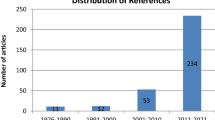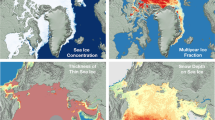Abstract
Automated detection of fog and low stratus in nighttime satellite data has been implemented on the basis of numerous satellite systems in past decades. Commonly, differences in small-droplet emissivities at 11μm and 3.9μm are utilized. With Meteosat SEVIRI, however, this method cannot be applied with a fixed threshold due to instrument design: The 3.9μm band is exceptionally wide and overlaps with the 4μm CO2 absorption band. Therefore, the emissivity difference varies with the length of the slant atmospheric column between sensor and object. To account for this effect, the new technique presented in this paper is based on the dynamical extraction of emissivity difference thresholds for different satellite viewing zenith angles. In this way, varying concentrations of CO2 and column depths are accounted for. The new scheme is exemplified in a plausibility study and shown to provide reliable results.
Similar content being viewed by others
Author information
Authors and Affiliations
Corresponding author
Rights and permissions
About this article
Cite this article
Cermak, J., Bendix, J. Dynamical Nighttime Fog/Low Stratus Detection Based on Meteosat SEVIRI Data: A Feasibility Study. Pure appl. geophys. 164, 1179–1192 (2007). https://doi.org/10.1007/s00024-007-0213-8
Received:
Accepted:
Published:
Issue Date:
DOI: https://doi.org/10.1007/s00024-007-0213-8




